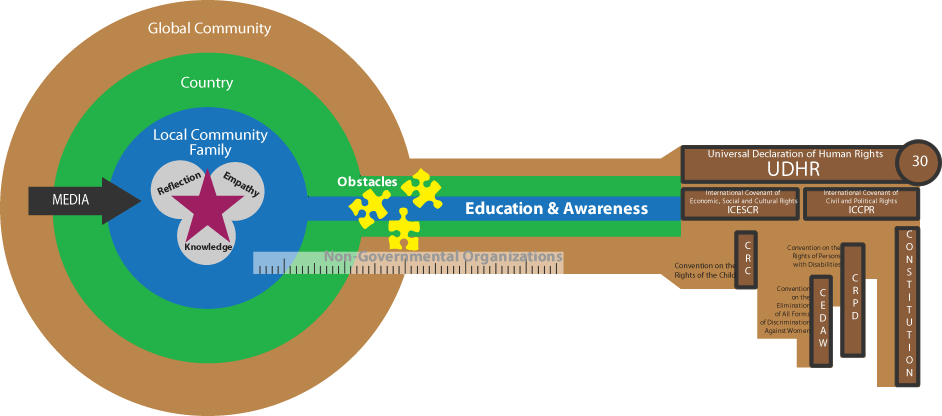







Links to other keys: International (General) Key | Local (South African) Key | Disability Key | LGBTI Key
Disability Key

The Disability Key
The Convention on the Rights of Persons with Disabilities (CRPD) is a development tool respecting human diversity. Adopted in 2006, it came into force in May 2008 with pressures and influence from collaborative efforts with disability organizations.
https://www.un.org/development/desa/disabilities/convention-on-the-rights-of-persons-with-disabilities.html
Who? Persons with disabilities include those who have long-term physical, mental, intellectual or sensory impairments which in interaction with various barriers may hinder their full and effective participation in society on an equal basis with others. (CRPD. Art. 1)
What is disability? Disability is an evolving concept, and that disability results from the interaction between persons with impairments and attitudinal and environmental barriers that hinders full and effective participation in society on an equal basis with others. (CRPD. Preamble)
A paradigm shift has influenced perspectives on disability. Previous biomedical models in which disability was objectified have moved to human rights frameworks in which personal and contextual issues are viewed to respect the dignity of each individual person within their own complex lived world experiences. Persons with disabilities (PWD) are entitled to equal opportunities and participation in society.
Why the need for a specific disability convention? To promote, protect and ensure the full and equal enjoyment of all human rights and fundamental freedoms by all persons with disabilities, and to promote respect for their inherent dignity. (CRPD. Art. 1)
A strong history of disregard and marginalization for disability catalysed pressure to enforce the convention in record time. The lack of provision for people with disabilities in other existing human rights instruments was a driving force in establishing the CRPD.
This Convention does not create any new rights. It does, however, highlight the accessibility and inclusion angle of all human rights. Schulze, M. 2010. A Handbook on the Human Rights of Persons with Disabilities: Understanding The UN Convention On The Rights Of Persons With Disabilities. Handicap International. p7. http://www.handicap-international.fr/fileadmin/documents/publications/HICRPDManual.pdf.

The Human Rights Key by Veronica Mitchell,University of Cape Town is licensed under a Creative Commons Attribution � NonCommercial - ShareAlike 2.5 South Africa License, 2011.
Source available from here. For any updates to the material, or more permissions beyond the scope of this license, please email healthoer@uct.ac.za or visit www.healthedu.uct.ac.za.